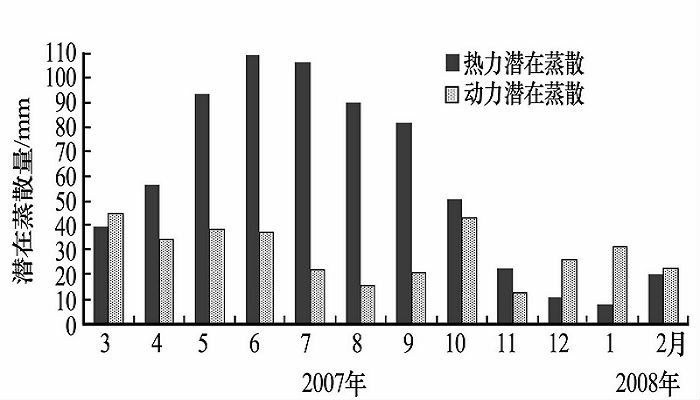Analysis on Potential Evaptranspiration and Dry-Wet Conditions in Seasonal Frozen Soil Region of Northern Tibetan Plateau
Updatetime:2010-12-17From:
【Enlarge】【Reduce】
Based on the observed data at Automatic Weather Site(AWS) of MS3478 in the seasonal frozen soil region of northern Tibetan Plateaufrom March 2007 to February 2008.The variation characteristics of potential evapotranspiration (PE) was analyzed based on Penman-Monteith method recommended by FAO. The contributions of dynamic, thermal and water factors to PE were discussed. Meanwhile, the wet-dry conditions of that region was further studied. The results indicated that the daily PE was between 0.52 mm and 6.46 mm in the whole year. In summer, the evaporation was the most intensive, and month PE from May to Septemberwas over 100 mm. In November, there wasa clear mutant. Annual potentialevapotranspiration was 1037.83 mm. In summer, thermal evapotranspiration was much more significantly than dynamic evapotranspiration; in winter it was on the contrary. In addition, the drought and semi-drought climate lasted for a long time while semi-humid climate short. The effect of water and dynamic factors on PE varied considerablywith the season. Soil moisture was not the main factor affected PE.
|
Annual variations of dynamic and thermal potential evapotranspiration (Picture/Plateau Meteorology) |
Appendix





